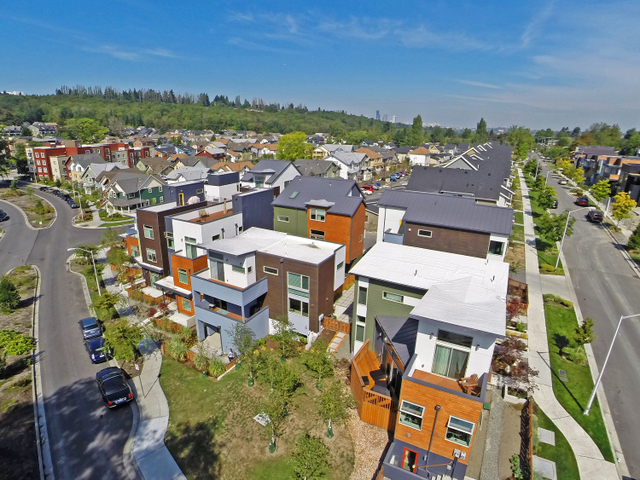The next 10 years are going to bring a host of new energy choices and a lot more market clout for so-called energy “pro-sumers” — utility customers who consume energy but also produce it, using their own rooftop solar energy systems — according to Stellar Solar founding partner Michael Powers.
In addition to the impressive surge of new solar energy installations in the U.S. – which topped 1 million earlier this month – Powers cited four growing energy trends that are literally putting more power into the hands of solar energy customers everywhere including:
- Community solar;
- Community Choice Energy or CCE;
- New progress in peer-to-peer solar energy transactions; and
- The expansion of regional and even global energy grids, which can move renewable power longer distances to new markets.
“The disadvantage of renewable energy has always been its intermittent nature,” Powers explained. “Driven by the sun, solar energy provides more power than you need in the middle of the day and no power at night. It’s ‘non-dispatchable’ – you can’t turn it up and down to match customer demands from one hour to the next.”
RELATED: Here’s a community solar solution for investor-owned utilities
Powers, a founding partner of Stellar Solar, one of California’s leading commercial and residential solar installers since 1998, was one of the featured speakers at a May 11 meeting hosted by the San Diego Renewable Energy Society and Global Energy Network Institute (GENI). Also presenting was Keri Helmer, Project Assistant for Renewables at the Center for Sustainable Energy.
In order to take full advantage of solar energy’s new widespread popularity, Powers said, there is a need for more flexible markets and more robust transmission systems to move renewable energy to where it is needed. As the pool of solar owners grows, he said, these important market trends are beginning to emerge.
Community solar allows groups of people to invest in large, shared solar arrays and apply some credits to their power bill; in this way, apartment-dwellers and lower-income groups can gain access to affordable solar power. Experts are saying that 2016 could be community solar’s breakout year.
Community Choice Energy (or CCE and formerly known as Community Choice Aggregation) is a growing trend in California and other states that allow cities and counties to directly purchase energy on behalf of their citizens – usually including a higher percentage of renewable energy – and relegates utilities to simply transmitting and distributing this cleaner power. Marin and Sonoma Counties have had CCE programs for over 2 years now; with Lancaster signing on last year and San Francisco just launched their own CCE program on May 1, called CleanPowerSF.
Even more exciting, Powers said, were recent successful tests of a peer-to-peer solar energy trading system in Brooklyn which allows homes on one side of the street to harvest solar energy and sell it to homes on the other side of the street through a trading system which is independent from the utility and uses computer software called “blockchain” to keep track of the monetary value of the trades.
“If successful, this could be the Uber of solar energy,” Powers said. “Allowing a solar owner in one time zone to ‘deposit’ solar energy into the system and another one miles away to make an ‘energy withdrawal’ and the computers will simply keep track of the money.”
RELATED: SEPA report: How to improve community solar models
This practice could someday extend to the global level, Powers pointed out, thanks to the plans of State Grid Corp., China’s largest utility, to build a global energy grid or “renewable energy internet,” over the next 20 years, a project which will take $15-30 trillion and the participation of multiple regional power grid operators on multiple continents. Plans were announced in April 2016 in Beijing and so far, countries including South Korea, Japan and Russia have signed on with China as partners in developing a pan-Asian energy grid to extend as far south as the Philippines.
Quoting experts such as author Jeremy Rifkin, IEEE senior fellow Clark Gellings among others, Powers said these four developments are all part of the “digital disruption” that has already impacted industries like publishing, entertainment, telecommunications and transportation.
“The electric utility industry is simply the next one to be re-invented,” Powers said. “But the impacts of this change are going to be profound and long-lasting — because everything we know runs on energy. When you lower the cost of energy, you lower the cost of everything.”
— Solar Builder magazine
[source: http://solarbuildermag.com/news/four-solar-energy-consumer-trends/]



Leave a Reply
You must be logged in to post a comment.